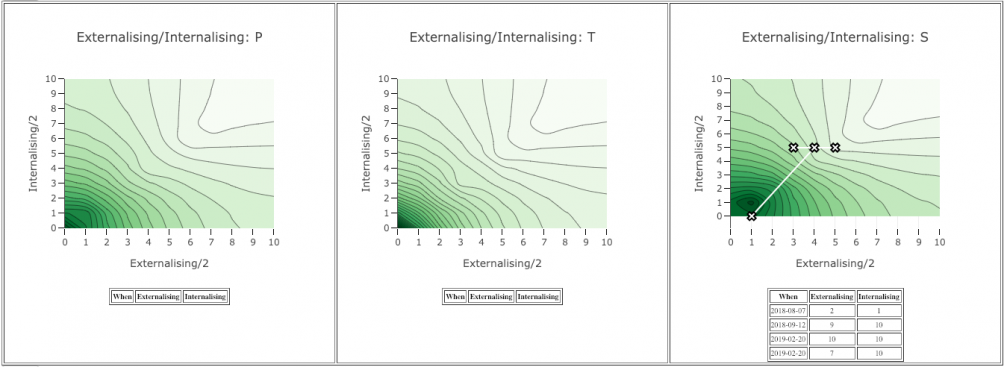The SDQ has five “negative” subscales (impact, emotional, conduct, peer and hyper) which with a “positive” prosocial subscale, provide insights in the assessment and therapy of children with mental health disorders. Goodman et al (Goodman, A., Lamping, D.L. & Ploubidis, G.B. J Abnorm Child Psychol (2010) 38: 1179. https://doi.org/10.1007/s10802-010-9434-x) suggest, however, that for children registering low in the negative subscales (i.e., low risk), externalising/internalising scores may be advantageous.
The calculation of externalising/internalising scores is computationally trivial:
Externalising = hyper + conduct
Internalising = peer + emotion
We have abstracted a contour map from a population of some 20,000 SDQ scores from participating organisations to provide context for individual externalising/internalising scores and plot individual scores on this background (see figure).
SDQplus extends the SDQ to provide longitudinal/historical
assessment. This allows visualising externalising/internalising
through time (see figure). Externalising/internalising plots are available only with SDQplus, which is provided at no cost through normal SDQ assessment fees.

